Mooer Audio packs in the Ocean Machine many interesting delay and reverb effects and offers the whole thing at a competitive price.
For the Ocean Machine effect pedal, Mooer Audio broke new ground and collaborated with the Rock/Metal guitarist Devin Townsend. In close cooperation, both developed this new multi-effect pedal. The result is a reamed dual delay & reverb effect processor that can do more than just producing standard effects. In this full review, I try to find out if this pedal is a hit or a flop.
Unboxing & First Impression
The pedal is delivered in a beautiful designed cardboard box where you can find a picture from Devin Townsend on it. When unpacking is already on the fact that the pedal is not easy but extremely stable. Directly one falls the large number of black knobs on the interface that invite you to play with it. The design is simple: blue interface, white writing gives some contrasts, black knobs and in the middle a colour display.
It weights 1.12 kg and has the dimensions of 12x 215 x 55 mm which makes it clear that it’s not the smallest pedal. Unpacked and in the hand the Ocean Machine feels very valuable and can score with a solid quality. Even the knobs feel good and not cheap.
Compact Case But Many Features
What Mooer Audio has built in features here is quite remarkable. The Ocean Machines features 2 independent delays with 15 versatile delay types that ranges from 0-2 seconds of delay time and optional ping pong effect. Beside the two delay, it feature also a reverb effect processor with 9 different reverb types including a shimmer effect for each mode. Each of the delays contain also a tap tempo functionality with independent relative tempo options. All three effect processor are equipped with a dedicated very useful freeze effect.
That is not all! Each effect processor is controllable with four haptic controls on the interface. The Ocean Machine also has an handy audio looper that can record up to 44 second of audio. All that can be easily controlled via the color display. Users can also save here up to 24 presets in total and recall them with three foot switches. On top, the entire unit is programmable via MIDI.
Turn Around
On the back you can see clearly that this is a stereo pedal. You have two mono inputs and outputs as well a expression pedal input. Although that is a bit rarer, the Ocean Machine features a MIDI In/Thru connection but no USB port. This means, the firmware can be only updated with an additional purchase of a MIDI to USB converters.
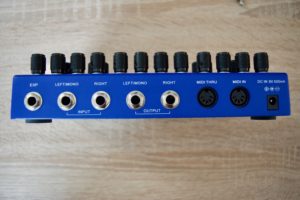
On the right side, you have also a power supply input with 9V, a cable is not included in the box. One can say that the pedal offers a good selection of connections.
A Delay Effect Paradise
The Mooer Ocean Machine can be described as a true delay paradise. It has 17 different delay effect types ranging from normal (digital, analog-style, tape…) to very special ones (crystal, galaxy, low-bit…). Each delay effect can be tapped and used individually. You will not be forced to use booth at the same time. In the Delay A section of the pedal, you can find the following types:
- digital: high-fidelity delay with clean repeats
- analog: vintage BB-style delay with warm degrading repeats
- tape: based on a classic reel to reel tape echo
- echo: based on a vintage echorec
- liquid: digital delay with modulated phaser repeats
- rainbow: special effect pitch delay with modulation
- crystal: special effect pitch delay with glistening highs
- low-bit: delay with bit-crusher
- fuzzy: delay with fuzz
In the following video, the individual types from the delay A section were tested more thoroughly using the preenFM 2 FM Synthesizer.
By and large, the different types from the Delay A convinced me during the test. All popular delay types sound clean and fine. I especially like the extraordinary effects (liquid, rainbow or crystal) that bring some magic into this pedal. Cool here is that you can combine an standard and special one together and create so unique delay tunes. All the delay A effects are high-quality and sound solid in my opinion. Not high-end but they are very good usable in the studio or live on stage.
Even More Delay Types In The B Section
In the Delay B section of the pedal, you can find the following types:
Also in Delay A section are:
- digital: high-fidelity delay with clean repeats
- analog: vintage BB-style delay with warm degrading repeats
- tape: based on a classic reel to reel tape echo
New in Delay B section are:
- real: clear delay with natural sounding repeats
- dyna: dynamic delay
- galaxy: delay with swelled repeats and a light modulation
- mod: delay with modulated repeats
- tri mod: 80’s style delay with thick modulated repeats
- mod-inv: reverse delay with modulation
In the following video, the individual types from the delay B section were tested more in depth using the preenFM 2 FM Synthesizer.
Same result here. All the delays in the B sections sound good and solid to me. Also here, the extraordinary delay effects (galaxy, tri mod…) are my favourite because these gives musicians a lot of sound design possibilities. Also these second selection is high-quality in the character but not high-end.

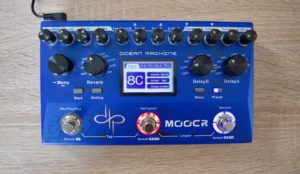
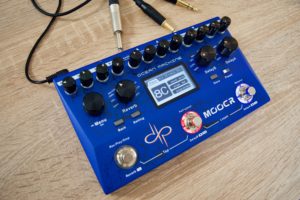
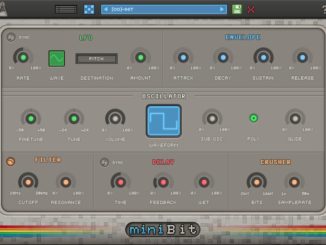
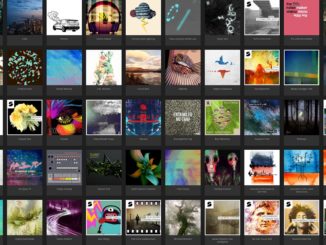
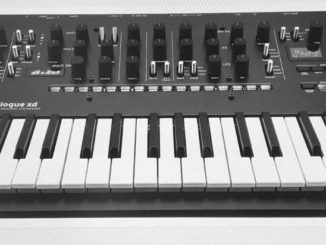
How is this a ‘full review’ when it completely overlooked the (largely problematic) MIDI functionality?
Hi. Please read the positive and negative aspects, I clearly states: +/- no MIDI clock sync on delays (feature for synth players)
It’s a guitar pedal developer so the feature is less important I think. If they sell it as “synthesizer effect processor”, than I would say it’s a big issue. Cheers